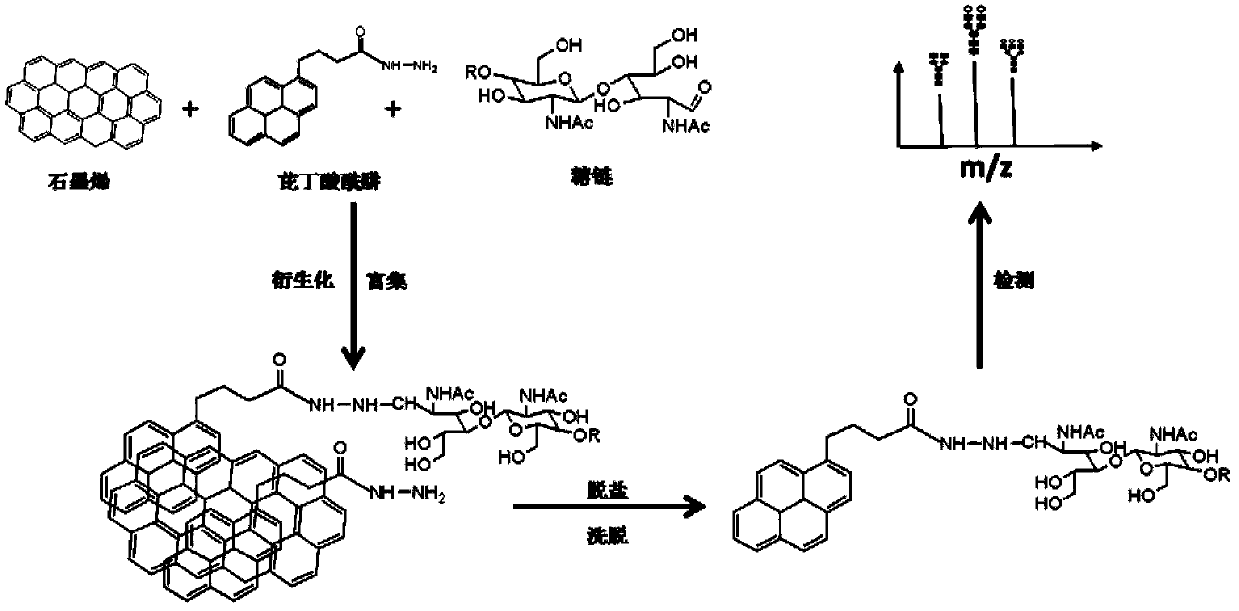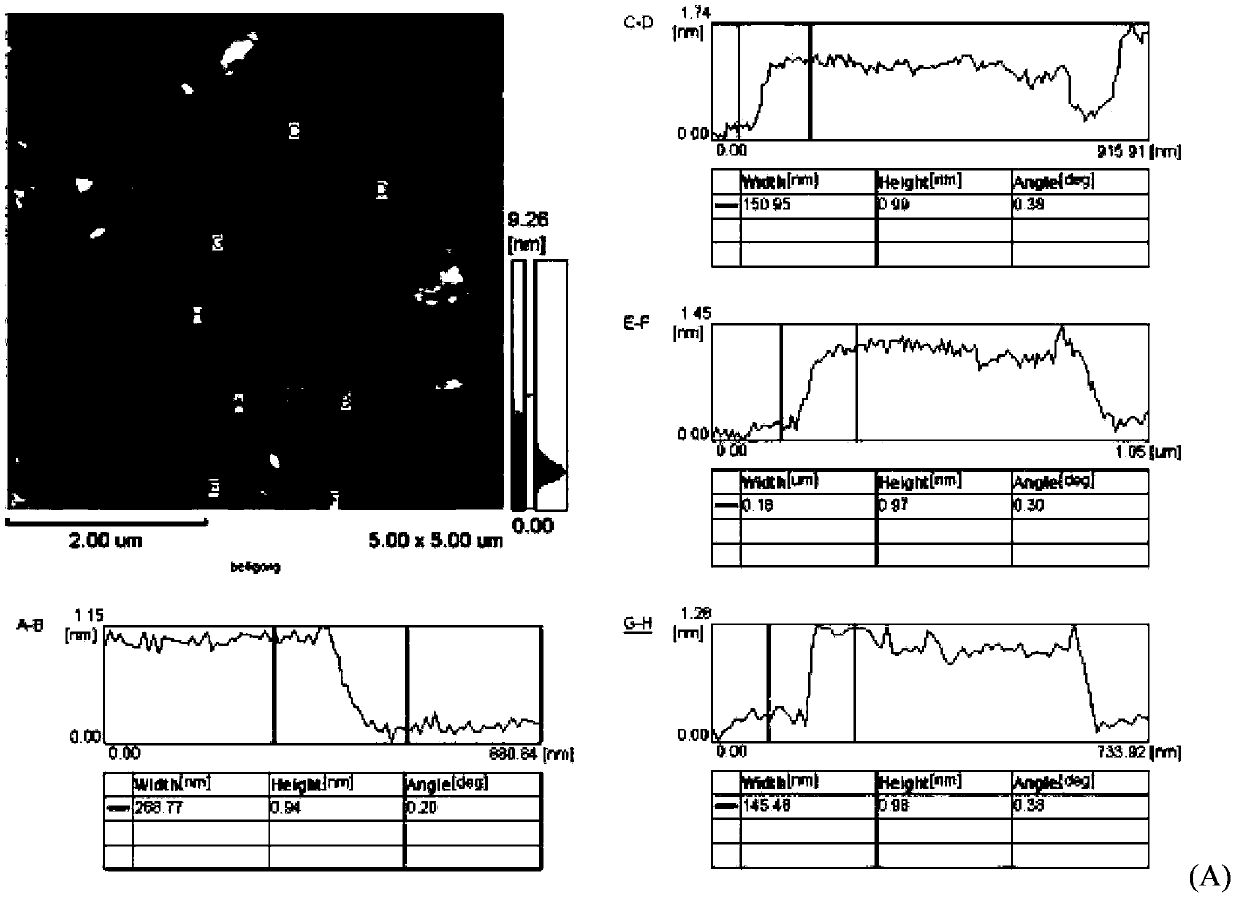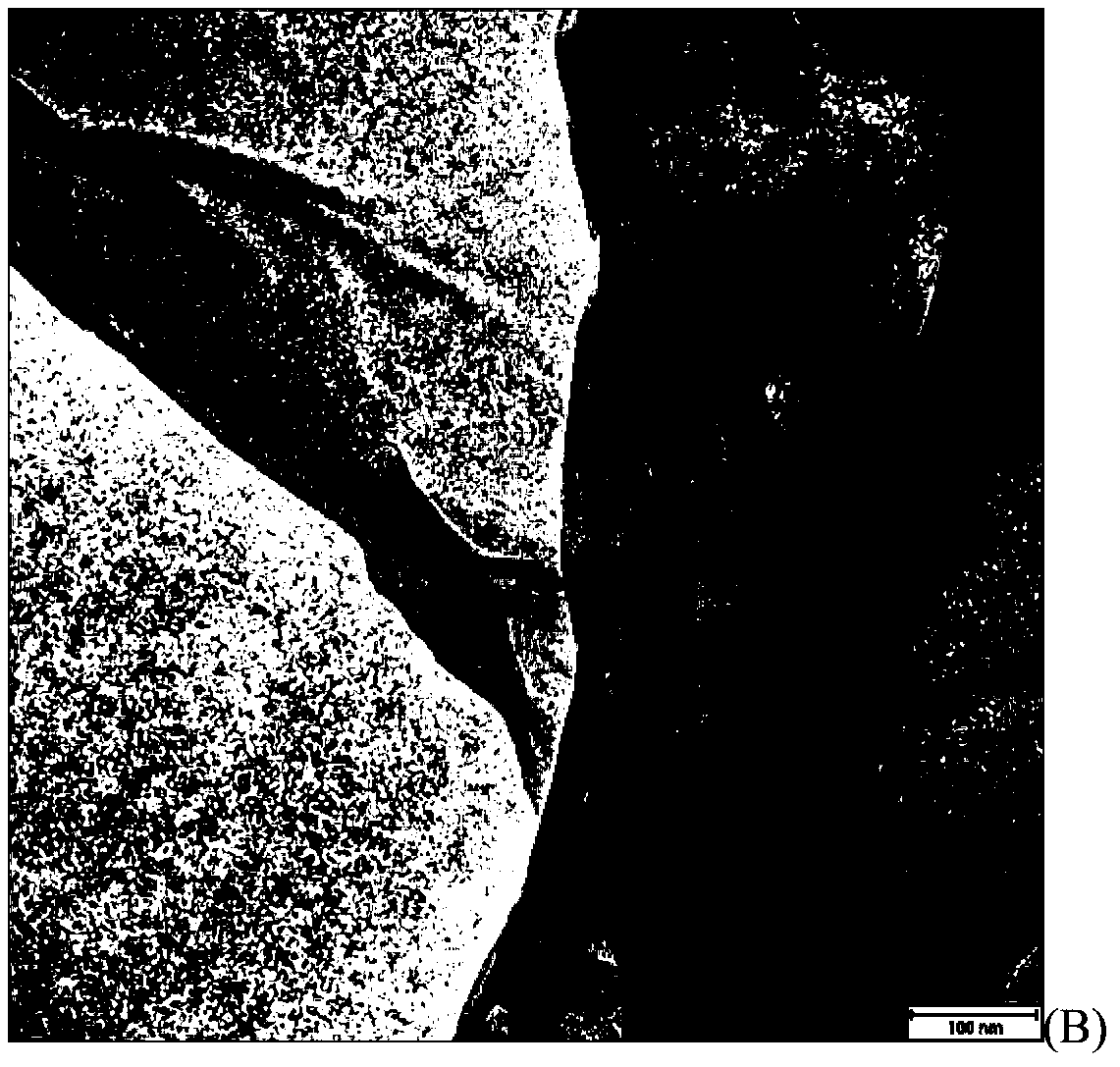Glycoprotein N-carbohydrate chain one-step enrichment-derivation processing method based on graphene and MALDI-TOF-MS analysis method
A MALDI-TOF-MS, glycoprotein technology, applied in analytical materials, material separation, measurement devices, etc., can solve the problems of complicated operation steps, sample loss, etc., to improve the response of mass spectrometry signals, increase signal intensity, and remove detection signals. the effect of interference
- Summary
- Abstract
- Description
- Claims
- Application Information
AI Technical Summary
Problems solved by technology
Method used
Image
Examples
preparation example Construction
[0045] a) Preparation of graphene oxide. Usually, 0.5g phosphorus flake graphite and 0.5g Na 2 NO 3 Added to 23mL pre-cooled concentrated sulfuric acid. Subsequently, 4 g KMnO was slowly added to it 4 . The resulting mixture was stirred in an ice bath for 10 min and then transferred to a 35 °C water bath for stirring. After 1 h, 40 mL of deionized water was slowly added dropwise to the above system while maintaining the temperature of the system at 90 to 95°C. After 1 h, 100 mL of deionized water and 3 mL of H 2 o 2 And the reaction solution was stirred at room temperature for 2 h. Subsequently, the resulting product was washed with 1000 mL of deionized water containing 5 mL of HCl and then with deionized water until the pH of the eluent became neutral. Finally, the obtained product was vacuum-dried at 50° C. for 24 h to obtain the desired graphene oxide.
[0046] b) the above-mentioned graphene oxide obtained with NaBH 4 Carry out reduction treatment to obtain graph...
Embodiment 1
[0047] Example 1: One-step enrichment-derivatization treatment and MALDI-TOF-MS analysis of standard oligosaccharides based on graphene
[0048] One-step enrichment and derivatization of the standard oligosaccharide maltoheptaose (DP7) based on graphene and PBH.
[0049] 10 pmol of DP7 standard, 500 pmol of PBH (PBH) and 0.1 mg of graphene were mixed in 0.5 mL of methanol containing 0.5% acetic acid, and incubated at 90° C. for 1 h. After discarding the supernatant, the obtained graphene sample was washed three times with deionized water and methanol, respectively, and the enriched sugar chains were eluted with DMF, and analyzed by MALDI-TOF-MS.
[0050] The mass spectrometry conditions are: the instrument is 4800 Proteomic Analyzer, the positive reflector mode is selected, the acceleration voltage is 20KV, the scanning range is m / z1000-4000, the laser energy is 6000, and each mass spectrogram is composed of the total number of laser emission pulses A cumulative average of 10...
Embodiment 2
[0054] Example 2: One-step enrichment-derivatization treatment and MALDI-TOF-MS analysis of standard glycoprotein N-glycan chains based on graphene
[0055]Asialo-fetuin was dissolved in 50 mM ammonium bicarbonate (pH=8.0) or phosphate buffer (pH=7.8) at a concentration of 1 mg / mL. Afterwards, heat denaturation at 95°C for 10 minutes, and after cooling, add the required enzyme at the ratio of 1 U peptide N-glycosidase F (PNGase F): 100 μg standard glycoprotein (asialofetuin), and bathe in water at 37°C for 16 hours, so that Its sugar chains are fully released. Then add an appropriate amount of PBH and graphene (wherein, the ratio of graphene and PBH is 1mg: 15nmol; the molar ratio of PBH and sugar chains is 50: 1) in the system, and the resulting mixture is contained in a mass concentration of 0.5% Incubate in acetic acid in methanol for 1 h at 90°C. After discarding the supernatant, the obtained graphene sample precipitate was washed three times with deionized water and met...
PUM
| Property | Measurement | Unit |
|---|---|---|
| concentration | aaaaa | aaaaa |
| thickness | aaaaa | aaaaa |
Abstract
Description
Claims
Application Information
 Login to View More
Login to View More - R&D
- Intellectual Property
- Life Sciences
- Materials
- Tech Scout
- Unparalleled Data Quality
- Higher Quality Content
- 60% Fewer Hallucinations
Browse by: Latest US Patents, China's latest patents, Technical Efficacy Thesaurus, Application Domain, Technology Topic, Popular Technical Reports.
© 2025 PatSnap. All rights reserved.Legal|Privacy policy|Modern Slavery Act Transparency Statement|Sitemap|About US| Contact US: help@patsnap.com



